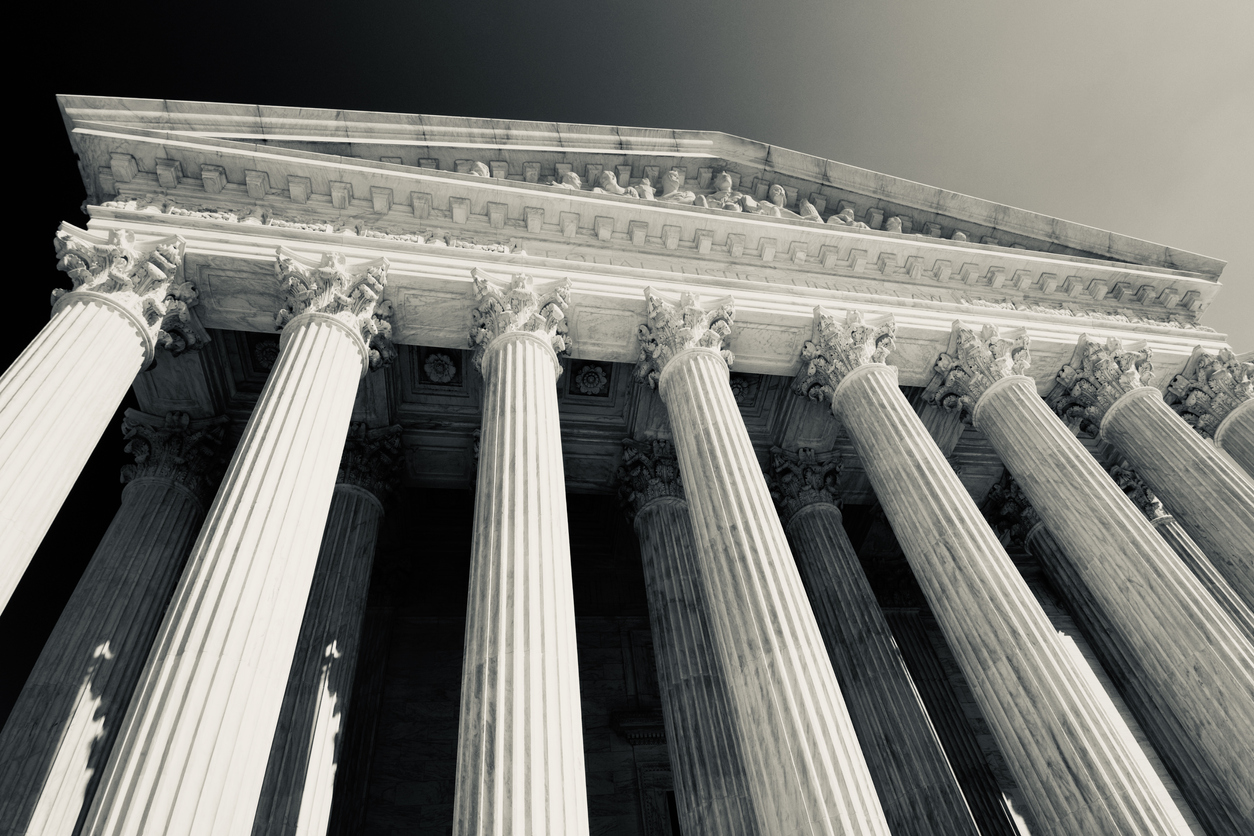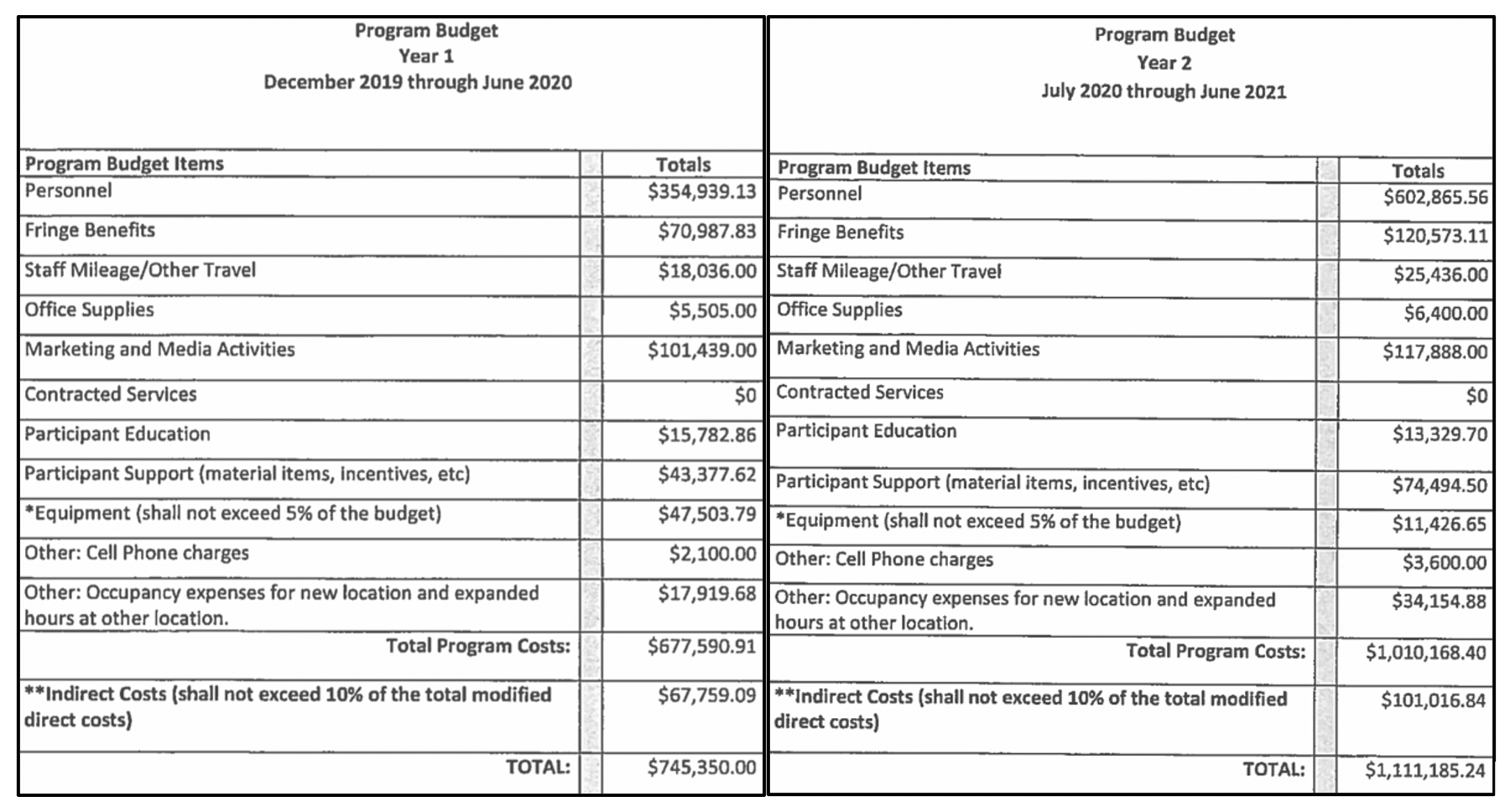Seven Reasons Why Anti-Abortion Centers Are a Problem, Not a Solution

Background
On December 1, 2021, the Supreme Court will hear arguments for Dobbs v. Jackson Women’s Health Organization. The case will weigh a Mississippi abortion ban and call into question the future of Roe v. Wade. In anticipation of Roe being overturned and abortion clinics subsequently being forced to close, anti-abortion centers (AACs) claim they are ready to absorb the burdens of people forced to carry a pregnancy to term. A Dobbs amicus brief filed by Heartbeat International, a network of anti-abortion centers, represents the savior mentality held by AACs in the face of challenges to legal abortion, although this sentiment can be found in other anti-abortion organizations (see other amicus briefs filed for Dobbs). For example, in its Dobbs amicus brief, Priests for Life praises the outcomes of an AAC-friendly, anti-abortion state legislature in Mississippi and denies the reality of Mississippi being ranked the worst place to have a baby. This rhetoric is also pedaled by anti-abortion media outlets that embellish the impact of AACs’ material assistance, which when examined closely do not amount to much assistance at all.
AACs’ claims deny the reality that abortion is healthcare and is necessary for everyone who does not wish to be pregnant and for whom pregnancy poses a health risk. Furthermore, AACs are largely unregulated, rely on predatory marketing practices, and take public dollars that could be better used in the fight against child poverty, infant mortality, and maternal mortality. In short, these networks pose a major threat to public health outcomes and can never be a solution to the very real problems they purport to solve.
AAC Rhetoric is Not Based on Reality—Here Is Why:
1. AACs do not provide meaningful support, and what they do provide is a sliver of the financial support parents truly need.
In its brief, Heartbeat International states, “In 2019, pregnancy help centers provided nearly 1.85 million people with free services … and material assistance, including more than 2 million baby clothing outfits, more than 1.2 million packs of diapers, more than 19,000 strollers, and more than 30,000 new car seats.”
In other words, AACs provided a stroller to 1% of their clientele, a car seat to 1.6% of their clientele, distributed 0.6 packs of diapers per person, and gave away 1.5 outfits per person. The “help” from AACs is inadequate and a far cry from the very real list of material items needed for babies.
In a separate brief filed for Dobbs, the Human Coalition and Students for Life state, “Culture has shifted since Roe was rendered. To acquiesce that abortion is necessary for women is to ignore 50 years of societal progress. Options for women are more diverse than ever. In 2019 alone, 2,700 pregnancy resource centers across the country, outnumbering abortion clinics 20 to 1, provided nearly $270 million in assistance to 2 million people nationwide.”
The allocation of $270 million sounds generous but equates to just $135 per person, an amount that could help someone in a temporary bind but certainly cannot sustain someone experiencing chronic financial hardship, as is the case for children who make up nearly one-third of people living in poverty in the United States.
2. AACs’ arguments deny the socioeconomic realities of pregnant people and parents.
Heartbeat International states in its Dobbs brief, “Numerous laws prohibit sex and pregnancy discrimination, guarantee employment leave for pregnancy and childbirth, and help enable child-care support for working mothers. College and advanced degrees can be obtained online from the comfort of one’s living room. And if women do not desire to be mothers, adoption and ‘safe haven’ laws allow women to relinquish their infants to the care of adoptive families.”
This statement is not based in reality. Pregnancy still results in workplace discrimination and denied workplace accommodations, paid family leave is not guaranteed, and working mothers routinely have to forfeit their professional aspirations to provide childcare, as we have witnessed during the mass exodus of women from the workforce during the pandemic.
3. AACs foster stigma against single parents that Heartbeat claims no longer exists
Heartbeat International states in its Dobbs brief, “As for changing societal mores, the social stigma associated with unexpected pregnancies today has all but disappeared. Today, 40% of U.S. births occur outside of wedlock, compared with only 30% at the time of Casey, or 13% at the time of Roe v. Wade, 410 U.S. 113, 153 (1973). It is simply a different world today wherein the factors underlying Casey no longer apply.”
If the stigma of single parenthood no longer exists, then why do state-based Alternative to Abortion programs rely on TANF program funds that are designed to accomplish four goals, including “prevent and reduce the incidence of out-of-wedlock pregnancies” and “encourage the formation and maintenance of two-parent families?”
4. AACs exist to discourage abortion, not to support pregnancy and parenting.
Heartbeat International states in its Dobbs brief, “Unlike in 1992, centers are now highly effective not only at providing options counseling, but at helping women through all stages of their pregnancy and beyond—including prenatal care, parenting classes, life-skill classes, and material assistance—to help ensure that women can participate equally in the economic and social life of the Nation.”
In reality, a large portion of public dollars received by AACs go toward overhead and personnel costs. Public records from Ohio’s AAC program obtained by Equity Forward revealed that the majority of TANF funds were used by grant recipients for marketing and overhead costs, not participant support and education.
Image 1. Fiscal year 2020 program budget for Elizabeth’s New Life Center, a grant recipient in Ohio’s alternative to abortion programming.

[Equity Forward public records request obtained Dec. 16, 2020 from Ohio Department of Jobs and Family Services]
5. AACs have changed over time, and so have the demographics of people who seek abortion care.
In its Dobbs brief, Heartbeat International states, “In short, the pregnancy help network has grown from a fledgling, loose community in the days in which Roe and Casey were decided, to an established, vast, well-organized, and professional network that spans the country.”
AACs have expanded their financial resources as the financial resources for those in need of abortion care have diminished. People seeking abortion today have lower incomes than those who had abortions two decades ago. In 1994, a quarter of people who had abortions were low income. In 2014, half of abortion patients lived in poverty. Temporary Assistance for Needy Families should be used to help families living in poverty, not line the pockets of AAC networks.
6. AACs use coercive tactics when encouraging people to remain pregnant.
In its brief filed for Dobbs, CareNet states, “Pregnant mothers are routinely coerced into abortions at abortion clinics ... Pregnant mothers are routinely pressured into abortions by the abortion clinic staff."
The truth is that anti-abortion centers thrive off the deceptive marketing tactics they use to get people into their doors. These practices include emotionally manipulative advertisements, copying the names and language of actual abortion providers and utilizing search engine optimization to mislead people seeking abortions to AACs.
7. The majority of AACs are not regulated and benefit from favoritism provided by anti-abortion lawmakers.
In a brief filed for Dobbs, the Human Coalition Action and Students for Life of America state, “The unregulated abortion industry benefits from exemptions not provided to others, leading to continual scandal, malpractice and abuse.”
The truth is that AACs benefit from anti-abortion state lawmakers that allow these centers to operate with impunity. In Minnesota, AACs have been awarded public dollars for 15 years without ever having received a comprehensive assessment of their operations. In Pennsylvania, the longstanding AAC network has continued to be funded—despite the state’s auditor general’s finding in 2016 that the AAC network running its Alternatives to Abortion program used public money inappropriately. In Texas, millions of public dollars have been moved from air quality programs and health technology budgets to the Alternatives to Abortion program—the subcontracting process behind which has been described as “secret” and has not been required to keep track of how many abortions are prevented through the program.
For more information on AACs, please check out our related research:
- Research file: Anti-Abortion Centers Handle Private Health Information—But Aren’t Bound By HIPAA
- Research file: Anti-Abortion Centers (AACs) Are Not Able to Meet the Needs of People Forced to Carry Pregnancies in States That Restrict Abortion
- Report: Mapping Deception: A Closer Look at How States’ Anti-Abortion Center Programs Operate